Choosing the wrong blinds supplier costs more than money—it destroys project timelines and client relationships. After managing supply partnerships across three continents, I've learned which questions separate professional suppliers from order-takers.
Ask suppliers about certifications, technical specifications, MOQs, lead times, warranty coverage, customization capabilities, shipping logistics, technical support, payment terms, and quality control processes. These ten critical questions reveal supplier capabilities and prevent costly procurement mistakes before contracts are signed.
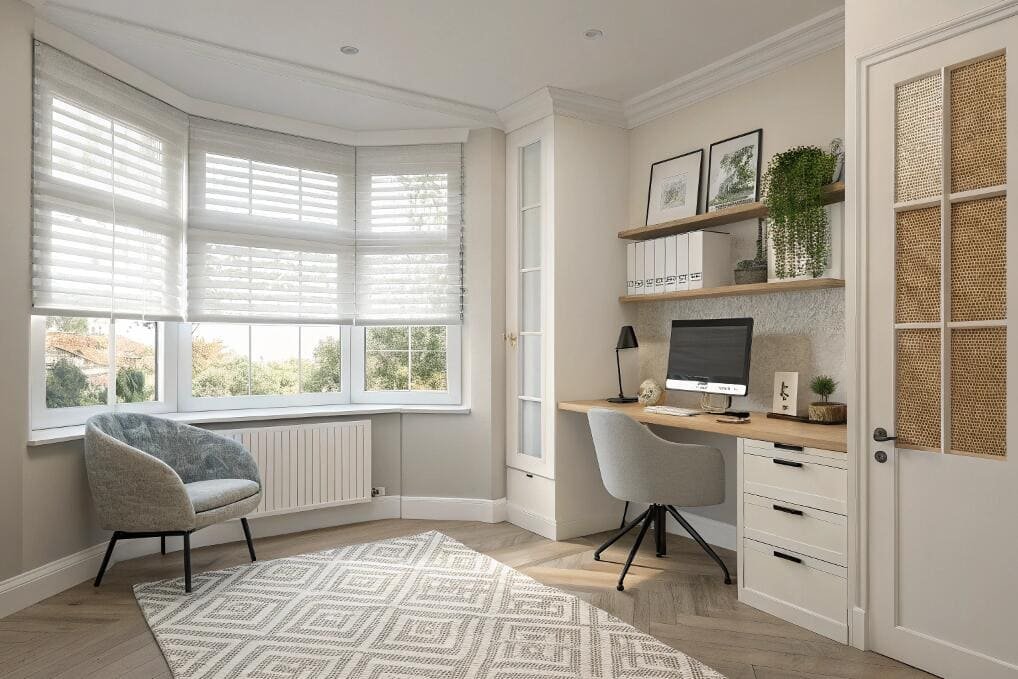
Getting these answers upfront eliminates surprises, establishes realistic expectations, and builds the foundation for successful long-term partnerships. Let me walk you through exactly what to ask and why each question matters for your business success.
What certifications and quality standards does your factory maintain?
Quality certifications[^1] reveal a supplier's commitment to manufacturing excellence and regulatory compliance, directly impacting product reliability and your liability exposure.
Professional blinds suppliers should maintain ISO 9001[^2] quality management certification, relevant safety standards like CE or UL depending on target markets, and environmental certifications such as GREENGUARD[^3] for low-emission products. Additional certifications like OEKO-TEX for fabric safety demonstrate comprehensive quality commitment.
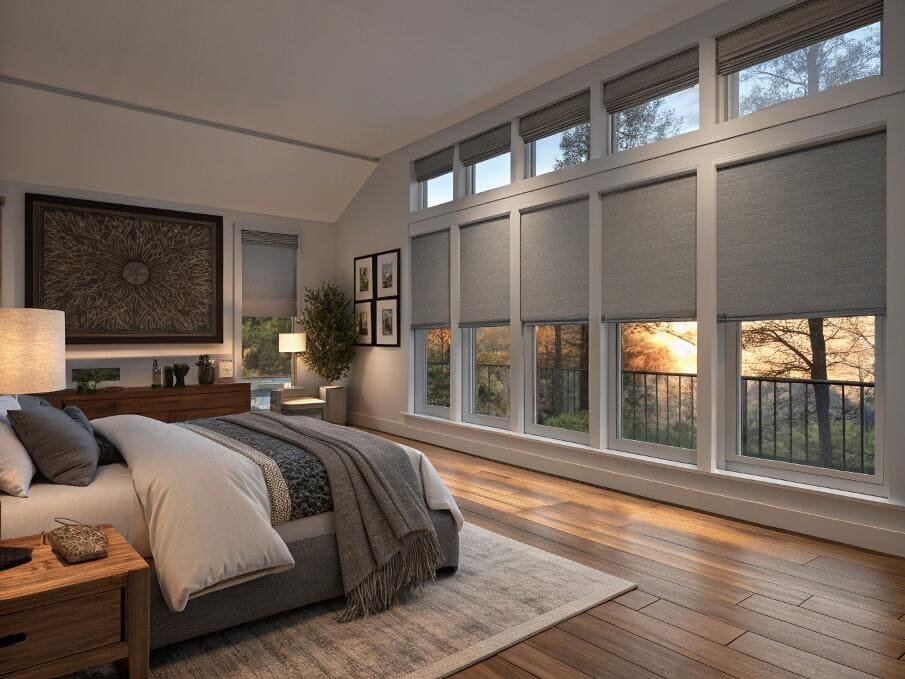
Understanding certification frameworks helps evaluate supplier credibility and manufacturing sophistication. ISO 9001 certification indicates systematic quality management processes including incoming material inspection, production control procedures, and final product testing protocols that reduce defect rates and improve consistency.
Safety certifications become critical for different market requirements. European markets require CE marking for motorized systems, while North American installations need UL listings[^4] for electrical components. Suppliers lacking appropriate certifications create compliance risks that can halt project installations and generate liability exposure.
Environmental certifications like GREENGUARD or GREENGUARD Gold verify low chemical emissions that matter for healthcare, educational, and commercial buildings with indoor air quality requirements. These certifications often determine supplier eligibility for LEED projects and environmentally sensitive applications.
Factory audit reports from third-party organizations provide additional validation beyond self-declared certifications. Suppliers confident in their operations readily share recent audit results and inspection schedules, while those avoiding transparency often hide quality problems.
Request specific certification numbers and expiration dates to verify current status. Quality-focused suppliers maintain updated documentation and proactively renew certifications before expiration. They also pursue additional certifications that expand market access and demonstrate continuous improvement commitment.
Manufacturing facility certifications matter as much as product certifications. Clean room standards, equipment calibration programs, and employee training certifications indicate systematic approaches to quality that translate into consistent product performance and reduced field problems.
Can you provide detailed product specifications and R-values for energy efficiency?
Technical specifications separate professional suppliers from basic resellers, with energy performance data becoming increasingly critical for code compliance and client satisfaction.
Demand comprehensive technical data including R-values for cellular products, Solar Heat Gain Coefficients for roller systems, fabric specifications with UV resistance ratings, motor performance data for motorized systems, and dimensional tolerances for custom applications. Professional suppliers provide certified test data from accredited laboratories.
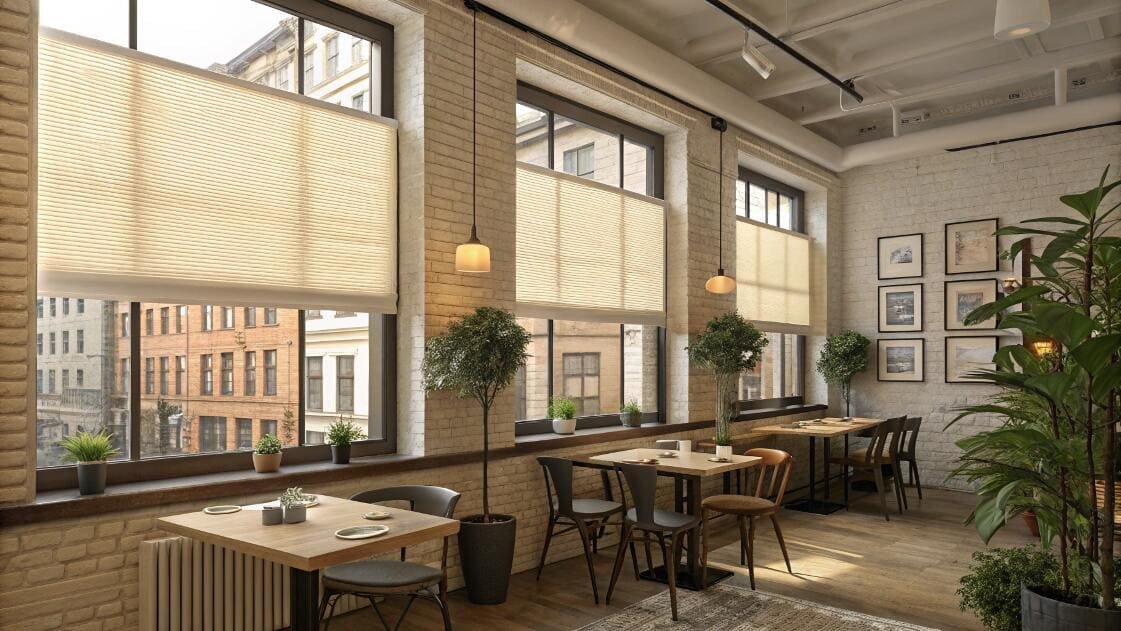
Energy performance specifications have evolved from optional information to mandatory requirements in many markets. Building codes increasingly specify minimum R-values for window treatments, particularly in extreme climate zones where envelope performance directly impacts HVAC sizing and operating costs.
R-value testing follows ASTM standards that ensure consistent measurement methodology across manufacturers. Single-cell honeycomb systems typically achieve R-2.5 to R-3.2, while double-cell designs reach R-3.8 to R-4.8. Triple-cell premium systems can exceed R-5.0, rivaling additional window panes in thermal resistance.
Solar Heat Gain Coefficient data becomes critical for cooling-dominated climates where blocking solar radiation provides primary energy benefits. Quality roller blind fabrics achieve SHGC values between 0.15-0.35 depending on openness factor and coating treatments. Lower values indicate better solar control performance.
Fabric specifications must include UV resistance ratings that predict color fastness and material degradation over time. Grade 4-5 lightfastness ratings on international scales indicate superior UV resistance suitable for high-exposure applications. Inferior fabrics fade within 2-3 years, requiring premature replacement.
Motor performance data for motorized systems should specify lifting capacity, duty cycle limitations, power consumption, and operating temperature ranges. Commercial applications require motors handling frequent daily cycles without overheating or premature failure. Battery life specifications matter for wireless systems, with quality motors providing 6-12 months operation per charge.
Dimensional tolerance specifications indicate manufacturing precision capabilities. Professional suppliers maintain tolerances within +/- 2mm for standard applications and +/- 1mm for premium installations. Loose tolerances create installation problems and visual inconsistencies that reflect poorly on project quality.
What is your minimum order quantity and lead time for custom orders?
Order flexibility and production scheduling directly impact project feasibility and cash flow requirements, making MOQ and timing discussions essential early in supplier evaluation.
Professional suppliers typically require 100-500 square meter minimums for custom orders, with lead times ranging from 15-35 days depending on complexity. However, established partners often receive preferential treatment with lower MOQs[^5] and expedited production scheduling for urgent projects.
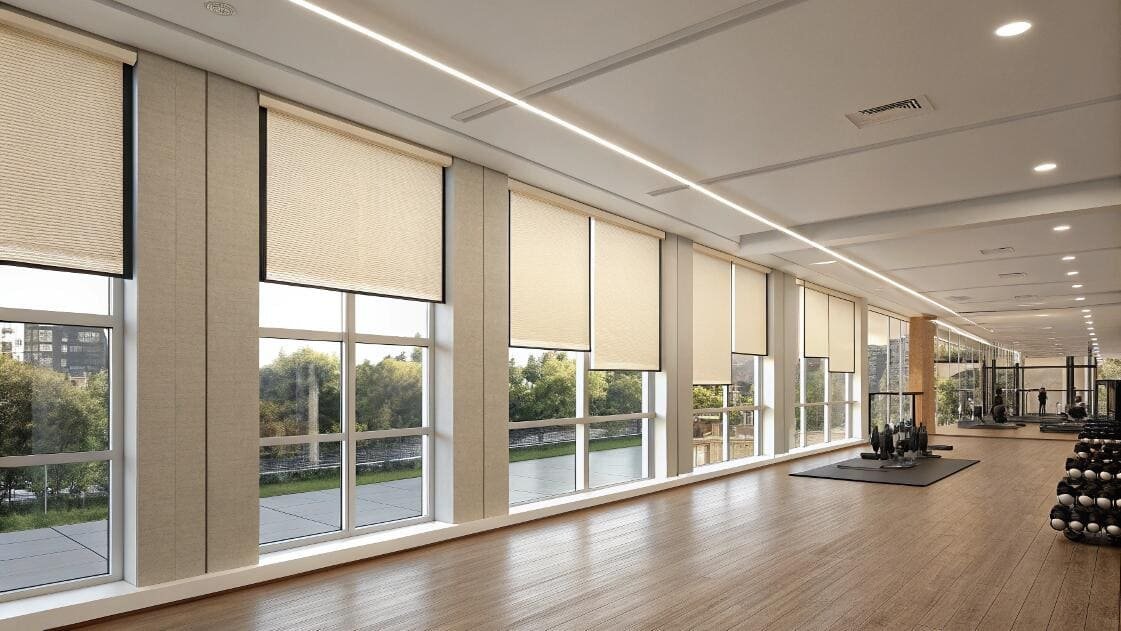
Minimum order quantities reflect production efficiency and setup costs that vary significantly between product types and customization levels. Standard roller blinds with stock fabrics may require only 50-100 units minimum, while complex motorized cellular systems need 200-500 units to justify setup costs and achieve reasonable pricing.
Custom color matching typically increases MOQs 2-3 times standard requirements due to dye lot setup costs and waste factors. Suppliers offering low custom minimums often compromise on color consistency or use inferior coloring processes that affect durability and appearance.
Lead time components break down into material procurement, production scheduling, quality control, and shipping preparation phases. Understanding each component helps identify potential delay points and evaluate supplier capabilities during peak demand periods.
Rush order capabilities reveal supplier flexibility and customer service orientation. Quality suppliers maintain buffer capacity for urgent projects, though rush orders typically carry 25-40% price premiums and may require minimum quantities above standard levels.
Production capacity transparency indicates professional supply chain management. Suppliers should clearly communicate current backlog levels, seasonal capacity variations, and maximum weekly output capabilities that affect large project scheduling.
Sample lead times often predict production efficiency and organization. Suppliers providing samples within 3-5 days typically maintain well-organized operations with responsive customer service. Extended sample times may indicate capacity constraints or organizational problems.
Seasonal demand impacts must be understood for planning purposes. Chinese manufacturers typically face capacity constraints before Chinese New Year and Golden Week holidays, while demand peaks during spring construction season create extended lead times industry-wide.
Do you offer white-label packaging and marketing support materials?
Brand presentation and marketing support distinguish suppliers focused on partner success from those treating customers as simple transactions.
Professional blind suppliers provide custom packaging with partner branding, product specification sheets, installation guides, and marketing materials including product photos and technical drawings. Advanced suppliers offer 3D rendering services and AR visualization tools that help partners win projects and close sales faster.
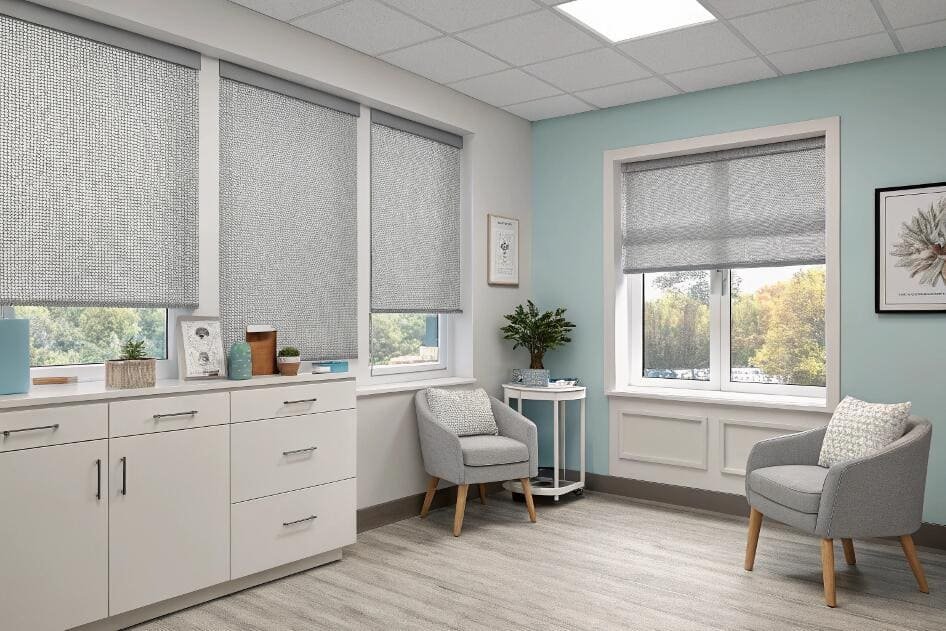
White-label packaging capabilities reflect supplier understanding of partner needs and market positioning requirements. Basic suppliers offer generic packaging with removable labels, while advanced partners provide fully custom packaging design including partner logos, color schemes, and product messaging that reinforces brand identity.
Marketing material quality directly impacts partner sales effectiveness and professional presentation. Comprehensive packages include high-resolution product photography, technical specification sheets, installation guides, and sales presentation templates that reduce partner marketing development costs and time-to-market for new products.
Digital asset libraries provide ongoing value through regularly updated content including new product launches, application photos, and technical updates. Cloud-based access ensures partners always have current materials without requesting updates or managing version control issues.
3D rendering services enable custom visualization for specific projects without physical samples. This capability proves particularly valuable for large commercial projects where architects and designers need detailed visual representations before final specifications. Quality suppliers maintain 3D model libraries and rendering capabilities that produce photorealistic images within 24-48 hours.
Technical drawing capabilities support specification writing and installation planning. CAD drawings with dimensional details, mounting specifications, and electrical requirements help architects incorporate window treatments into building plans and coordinate with other trades.
Training material development demonstrates supplier commitment to partner success through proper installation and sales technique education. Comprehensive training packages include video demonstrations, troubleshooting guides, and technical support contact information that reduce installation problems and warranty claims.
What warranty coverage do you provide for different product lines?
Warranty terms reveal manufacturer confidence in product quality and provide crucial protection against defects that can destroy project profitability and customer relationships.
Quality blind suppliers offer 2-5 year warranties on mechanical components, 1-3 years on motorized systems, and fabric guarantees covering UV fading and structural integrity. Commercial-grade products typically receive longer warranty periods, while premium lines may include comprehensive replacement coverage including labor costs.
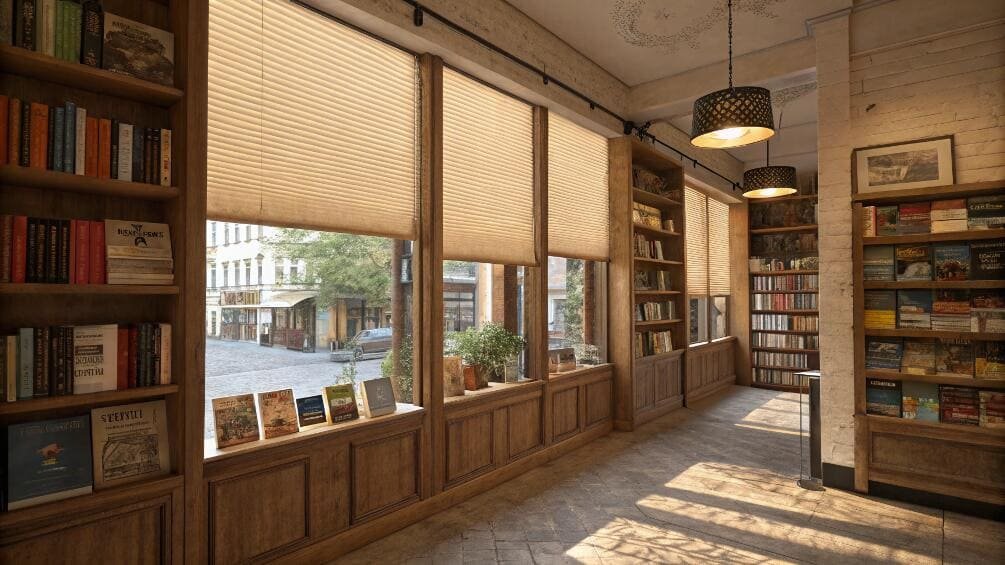
Warranty coverage varies significantly between product categories based on complexity and failure probability. Manual blinds with simple lifting mechanisms typically offer 3-5 years coverage on hardware components, while motorized systems receive 1-2 years due to electronic component complexity and higher failure rates.
Fabric warranty terms address the most common customer complaints including fading, shrinkage, and premature wear. Quality suppliers guarantee UV resistance for 3-5 years depending on fabric grade and installation exposure. Budget fabrics may offer only 1-2 year coverage, indicating inferior materials and manufacturing processes.
Motor warranty coverage becomes critical for automated systems where replacement costs can exceed original equipment value. Comprehensive motor warranties include replacement units, technical support, and sometimes labor reimbursement for difficult installations. Limited warranties covering only motor replacement create hidden costs that affect project profitability.
Warranty claim processes reveal supplier customer service capabilities and responsiveness. Professional suppliers provide clear claim procedures, responsive technical support, and rapid replacement part shipment that minimizes project disruption. Complex claim procedures or slow responses indicate potential future problems.
Installation warranty coverage[^6] addresses damage during shipping and initial setup phases. Suppliers confident in packaging and product quality offer replacement coverage for shipping damage and installation defects within specified timeframes. This coverage proves particularly valuable for large commercial projects where single unit failures can impact entire installations.
Regional warranty service capabilities matter for ongoing support and claim resolution. Suppliers with local service networks or authorized repair facilities provide faster response times and reduced shipping costs for warranty claims compared to those requiring international return shipments.
Can you accommodate special sizing requirements and custom colors?
Customization capabilities determine supplier suitability for unique projects and design-focused applications where standard options cannot meet aesthetic or functional requirements.
Professional suppliers handle custom sizes from 8 inches to 120+ inches width with motorized systems, offer 200+ standard fabric colors plus custom color matching services, and provide specialty shapes including arches, triangles, and trapezoids. Advanced suppliers maintain fabric libraries exceeding 500 options with custom printing capabilities.
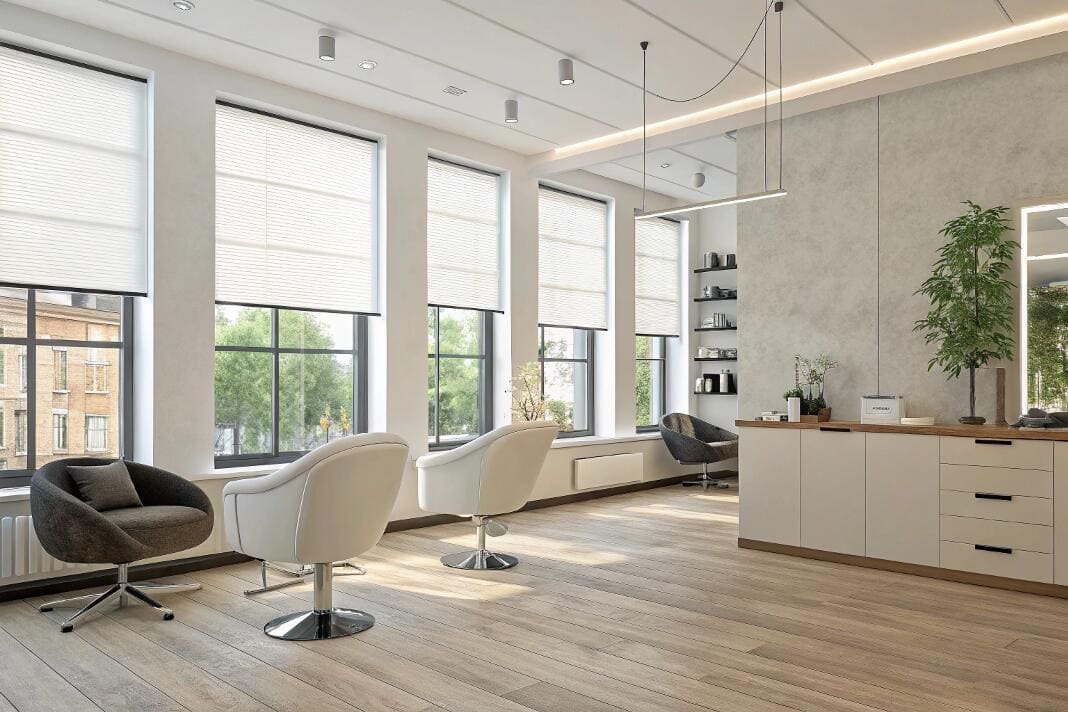
Size limitation understanding prevents specification errors and project delays. Manual systems typically handle widths up to 72 inches effectively, while motorized systems extend capabilities to 120+ inches through stronger lifting mechanisms. Height limitations vary by product type, with cellular systems handling greater heights than roller designs due to structural differences.
Custom color matching requires sophisticated dyeing capabilities and color management systems. Professional suppliers use spectrophotometer color matching that achieves Delta E values under 1.0 for critical color applications. Basic suppliers relying on visual matching often produce noticeable color variations that cause project rejections.
Minimum quantities for custom colors reflect setup costs and production efficiency requirements. Standard custom colors may require only 100-200 units minimum, while unique color matching demands 500-1000 units to justify dye lot setup and waste allowances. Understanding these requirements early prevents specification problems.
Specialty shape capabilities distinguish advanced suppliers from basic manufacturers. Arched windows, triangular skylights, and irregular shapes require specialized cutting equipment and installation hardware that many suppliers cannot accommodate. Suppliers offering these capabilities typically command premium pricing but enable unique project solutions.
Fabric customization extends beyond color to include texture modifications, pattern applications, and performance enhancements. Advanced suppliers provide custom printing services, texture embossing, and specialized coatings that create unique products for signature projects and brand differentiation.
Lead time impacts for customization vary significantly between suppliers and customization types. Standard custom colors may add only 5-7 days to production schedules, while complex color matching or specialty shapes can extend timelines 2-3 weeks. Planning for these extensions prevents project delays.
What shipping methods and logistics support do you offer internationally?
International logistics capabilities determine whether suppliers can reliably deliver products on schedule and in acceptable condition across global supply chains.
Established international suppliers offer multiple shipping options including air freight, sea freight, and express delivery, maintain relationships with major logistics providers like DHL and FedEx, provide cargo insurance coverage, and offer consolidation services to optimize shipping costs for multiple orders.
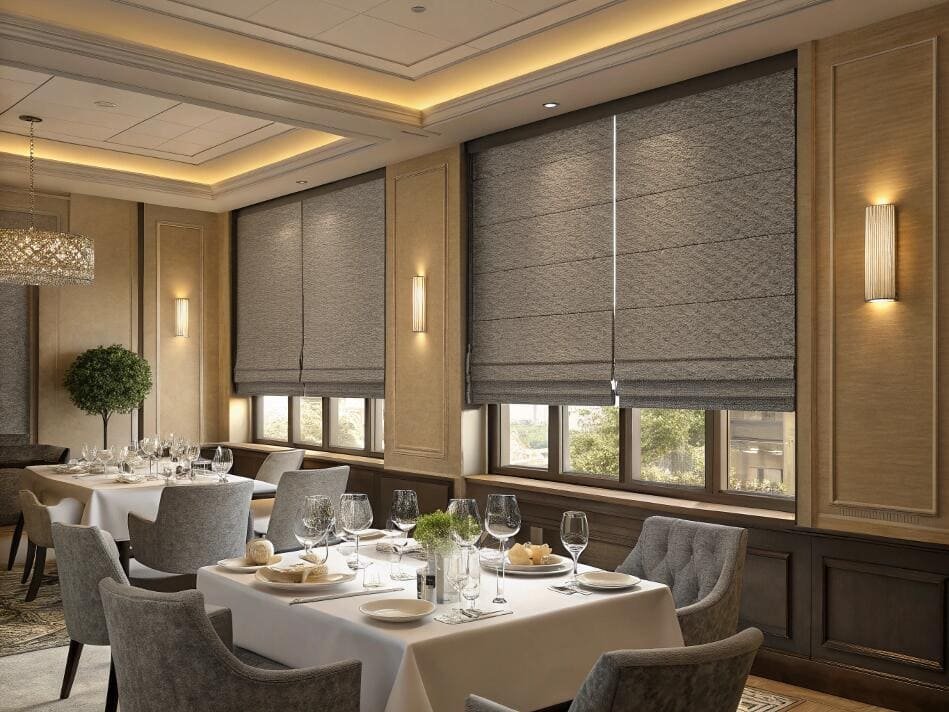
Shipping method selection impacts both cost and delivery timeline significantly. Sea freight offers lowest per-unit costs for large orders but requires 15-35 days transit time depending on destination. Air freight reduces transit to 3-7 days but increases costs 3-5 times, making it suitable only for urgent orders or high-value items.
Express delivery services like DHL and FedEx provide fastest delivery at premium pricing, typically used for samples, small orders, or urgent replacements. Professional suppliers maintain accounts with multiple carriers to offer flexibility and backup options when primary carriers face capacity constraints.
Cargo insurance coverage protects against loss or damage during international transit. Comprehensive coverage should include full replacement value plus shipping costs, with clear claim procedures and rapid resolution processes. Suppliers offering insurance demonstrate professional logistics management and customer protection focus.
Consolidation services optimize shipping costs by combining multiple orders into single shipments. This capability proves particularly valuable for partners with multiple ongoing projects or those building inventory levels. Proper consolidation requires sophisticated logistics management and storage capabilities.
Customs documentation expertise prevents delays and additional costs at destination ports. Professional suppliers provide complete commercial invoices, packing lists, and certificates of origin that expedite customs clearance. They also understand Harmonized System codes and duty classifications that affect total landed costs.
Packaging quality directly impacts product condition upon arrival. International shipping requires robust packaging that protects products from handling damage, moisture exposure, and temperature variations during extended transit periods. Suppliers experienced in international shipping design packaging specifically for these challenges.
Do you provide technical training and installation guidance for our team?
Technical support capabilities determine whether suppliers function as true partners or simply product vendors, with comprehensive training programs reducing installation problems and warranty claims.
Professional suppliers offer comprehensive training including video tutorials, written installation guides, remote technical support, and sometimes on-site training for large accounts. Training typically covers product selection, proper installation techniques, troubleshooting procedures, and maintenance requirements that reduce field problems and customer complaints.
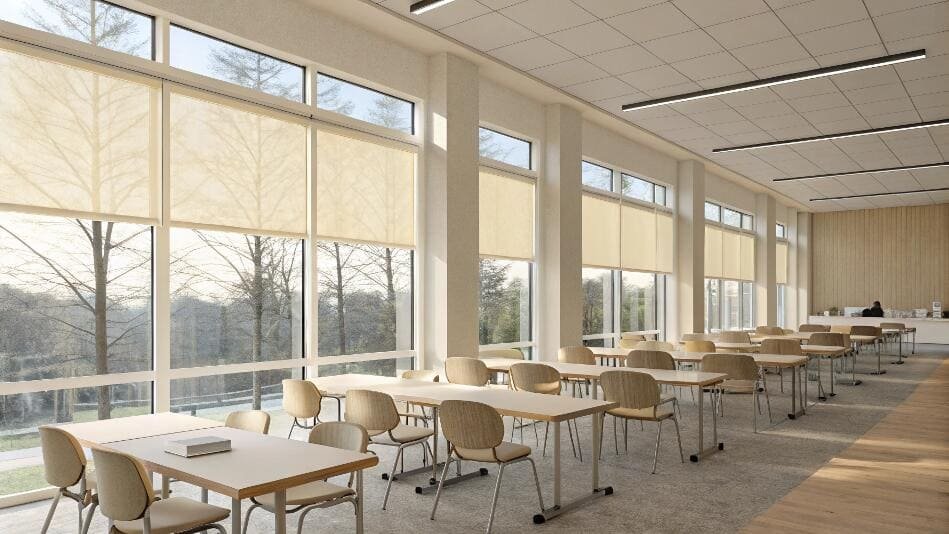
Training program comprehensiveness reflects supplier commitment to partner success and product performance optimization. Basic suppliers provide simple installation sheets, while advanced partners offer multi-media training programs including video demonstrations, interactive guides, and live webinar sessions that accommodate different learning preferences.
Installation video quality and content depth indicate production investment and technical expertise. Professional training videos show common mistakes, proper techniques, and troubleshooting procedures that prevent field problems. Poor quality videos with incomplete information suggest limited technical capabilities or customer support investment.
Remote technical support availability becomes critical when installation questions arise during project execution. Quality suppliers provide multiple contact methods including phone, email, video calling, and chat support during business hours. Some offer emergency support for critical project issues outside normal hours.
Troubleshooting guides help installers identify and resolve common problems without supplier contact. Comprehensive guides include diagnostic procedures, parts identification, and step-by-step repair instructions that reduce downtime and service calls. Well-organized troubleshooting resources indicate systematic approach to customer support.
On-site training availability for large accounts demonstrates supplier willingness to invest in partner relationships and ensure successful product implementation. While typically reserved for significant volume commitments, on-site training provides hands-on experience and direct technical interaction that improves installation quality and reduces warranty issues training certification programs for installers create additional value through standardized competency verification. Some suppliers offer installer certification that provides competitive advantages in bidding situations and assures clients of professional installation quality.
What payment terms and credit arrangements are available for established partners?
Payment flexibility and credit arrangements impact cash flow management and partnership development, with favorable terms often distinguishing preferred suppliers from transactional vendors.
Established blind suppliers typically offer net-30 payment terms for qualified accounts, with some extending net-60 or net-90 terms for large volume partners. Credit arrangements may include revolving credit lines, progress billing for large projects, and early payment discounts of 2-3% for payments within 10 days.
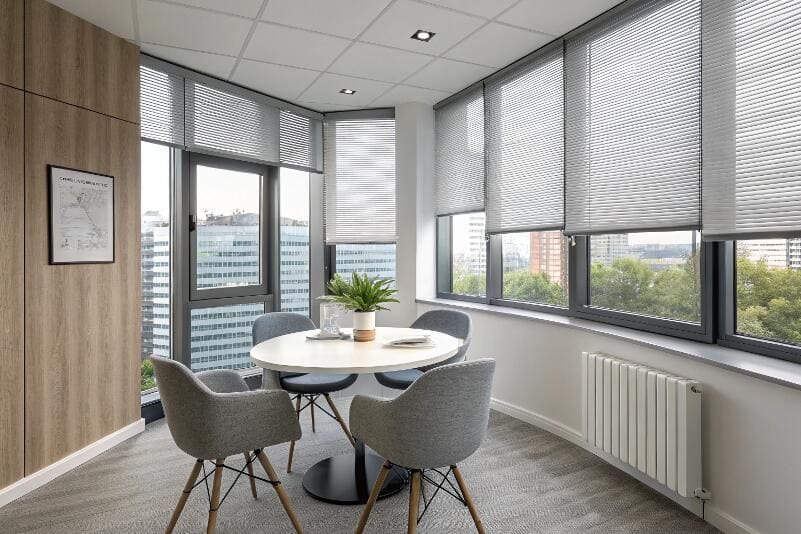
Payment term negotiation requires understanding supplier cash flow needs and establishing creditworthiness through financial documentation and trade references. New partnerships typically begin with prepayment or letter of credit requirements, progressing to net-30 terms after 6-12 months of successful transaction history.
Credit application processes reveal supplier professionalism and financial management sophistication. Professional suppliers require complete financial statements, bank references, and trade references before extending credit terms. Suppliers offering immediate credit without verification may indicate loose financial controls or desperate cash flow situations.
Early payment discounts provide immediate cost savings that can significantly impact project profitability. Standard discount structures offer 2% for payment within 10 days, 1% for payment within 20 days, with net amount due in 30 days. These discounts often exceed typical investment returns, making early payment financially attractive.
Progress billing arrangements help manage cash flow for large projects spanning multiple months. Suppliers may offer billing upon order confirmation, at production milestones, and upon shipment completion. This structure reduces working capital requirements for contractors handling significant blind procurement.
Revolving credit facilities provide maximum flexibility for partners with ongoing volume commitments. Established partners may negotiate credit lines enabling continuous ordering within predetermined limits, with monthly or quarterly settlement terms that optimize cash flow management.
International payment methods require additional consideration for currency risk and transaction costs. Professional suppliers accept wire transfers, letters of credit, and international payment platforms while clearly defining currency exchange responsibilities and banking fee allocation.
How do you handle quality issues and product returns or exchanges?
Quality control processes and return policies reveal supplier reliability and customer service commitment, directly impacting risk management and total cost of ownership.
Professional suppliers maintain comprehensive quality control including incoming material inspection, in-process testing, and final product verification before shipment. Return policies typically allow 30-day exchanges for defective products, with some offering prepaid return shipping and 100% replacement guarantees for manufacturing defects.
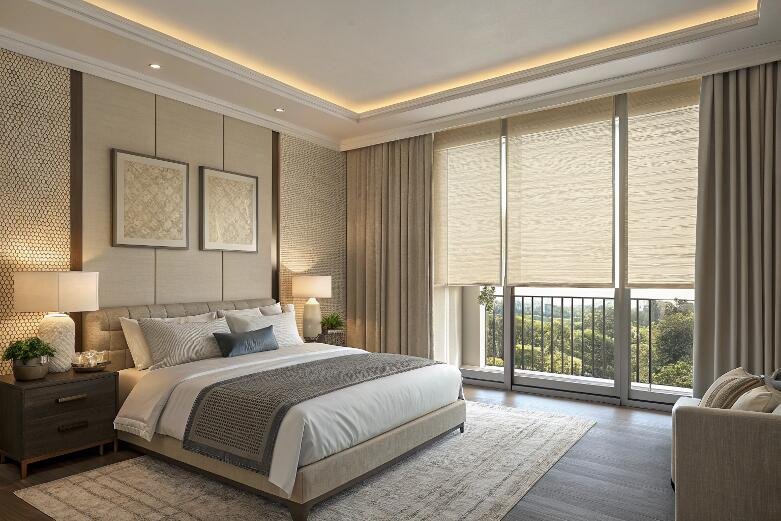
Quality control system transparency indicates manufacturing sophistication and consistency. Professional suppliers document inspection procedures, maintain statistical process control data, and provide quality certificates with shipments. They also welcome factory visits and quality audits from potential partners.
Defect rate reporting demonstrates confidence in manufacturing processes and commitment to continuous improvement. Suppliers tracking and reporting defect rates below 1-2% indicate systematic quality management, while those avoiding quality metrics discussion may hide performance problems.
Return authorization procedures should provide clear, simple processes for handling defective products. Professional suppliers offer online return authorization systems, prepaid shipping labels, and rapid replacement processing that minimizes project disruption and customer dissatisfaction.
Replacement product prioritization for quality issues shows customer service commitment. Quality-focused suppliers expedite replacement production and shipping for defective products, often providing rush delivery at no additional cost to maintain project schedules.
Root cause analysis capabilities distinguish professional suppliers from basic manufacturers. When quality problems occur, advanced suppliers investigate causes, implement corrective actions, and report back to customers on prevention measures. This systematic approach reduces recurring problems and builds confidence.
Quality improvement feedback systems enable continuous enhancement through customer input. Suppliers requesting detailed feedback on quality issues and implementing suggested improvements demonstrate partnership orientation and commitment to long-term relationships.
Credit or refund policies for quality problems should provide fair resolution options including full refunds, partial credits, or replacement products depending on problem severity and customer preference. Flexible policies accommodate different customer needs and project requirements.
Conclusion
These ten questions separate professional blind suppliers from basic vendors, ensuring successful partnerships that support your business growth and client satisfaction.
Partner with Supply Chain Experts Who Understand Your Business
Stop wasting time with suppliers who can't answer these critical questions. Our team provides transparent specifications, flexible terms, comprehensive support, and proven quality that successful dealers and contractors rely on.
Get detailed answers to all ten questions, complete technical documentation, and custom partnership proposals tailored to your business requirements within 24 hours.
Connect with our partnership specialists at info@velablinds.com for immediate supplier evaluation and procurement support.
Extended FAQ Section
How long should I test a supplier relationship before committing to large orders?
Test supplier relationships through 3-6 months of smaller orders before committing to major procurement contracts, allowing evaluation of quality consistency, delivery reliability, and customer service responsiveness under normal business conditions. Begin with sample orders of 10-25 units to assess product quality and shipping packaging effectiveness. Progress to medium orders of 50-100 units to evaluate production consistency and lead time accuracy during regular demand periods. Test communication responsiveness through technical questions, specification changes, and urgent delivery requests that reveal true service capabilities. Monitor quality metrics including defect rates, delivery accuracy, and customer satisfaction across multiple orders before increasing volume commitments. Document performance issues and supplier responses to build comprehensive evaluation records for decision-making. Professional suppliers understand this evaluation process and provide consistent performance throughout testing phases, while problematic suppliers often show declining service as familiarity increases. Establish clear performance metrics and evaluation criteria upfront to ensure objective assessment and avoid emotional decision-making during supplier selection processes.
What backup supplier arrangements should I maintain for critical projects?
Maintain qualified backup suppliers for 100% of critical product categories, with secondary suppliers capable of handling 50-75% of normal order volumes within extended lead times to prevent project delays during primary supplier disruptions. Establish relationships with 2-3 backup suppliers through regular sample orders and technical discussions that maintain engagement without significant volume commitments. Negotiate standby agreements allowing priority production access during emergencies, typically requiring 15-25% price premiums but ensuring availability when needed most. Document backup supplier capabilities including lead times, quality standards, and capacity limitations to enable rapid activation during supply chain disruptions. Test backup suppliers annually through actual orders rather than theoretical agreements, ensuring capabilities match documented specifications when activation becomes necessary. Regional diversification provides additional security against localized disruptions including natural disasters, political instability, or transportation problems affecting specific geographic areas. Maintain current technical specifications and pricing information from backup suppliers to enable immediate ordering decisions without extended negotiation periods during emergencies. Professional backup arrangements cost 5-10% of total procurement spending but prevent catastrophic project delays that can exceed 100% of original order values.
How do I verify supplier financial stability before establishing partnerships?
Verify supplier financial stability through comprehensive due diligence including financial statement analysis, credit reports, bank references, and trade verification that reveals actual business health beyond marketing presentations. Request audited financial statements for the previous three years, focusing on revenue trends, profit margins, debt-to-equity ratios, and cash flow patterns that indicate sustainable business operations. Obtain credit reports from commercial agencies like Dun & Bradstreet that provide payment history, legal issues, and financial stress indicators not visible in company-provided documentation. Contact existing customers through trade references to verify payment terms, service quality, and relationship longevity that demonstrate stable business practices. Visit manufacturing facilities to assess equipment condition, employee stability, and operational organization that support financial health claims. Monitor supplier performance through ongoing financial health indicators including payment term changes, delivery delays, or quality declines that may signal developing financial problems. Professional suppliers readily provide financial documentation and facility access, while those avoiding transparency often hide stability problems that create partnership risks. Consider financial health equally with product quality and pricing since supplier instability can destroy project timelines regardless of product excellence.
---
[^1]: Understanding certifications helps ensure you choose a reliable supplier committed to quality and compliance.
[^2]: ISO 9001 certification reflects a supplier's commitment to quality management and operational excellence.
[^3]: GREENGUARD certification ensures low chemical emissions, important for health-conscious projects.
[^4]: UL listings ensure safety compliance for electrical components in blinds, crucial for installations.
[^5]: Knowing MOQs helps you plan your budget and project timelines effectively.
[^6]: Warranty coverage indicates the supplier's confidence in their products and protects your investment.Partner with VelaBlinds for Your Next Project
Smart window treatments shouldn't be complicated. After working with 500+ distributors and contractors worldwide, I've streamlined the process to get you quality products, competitive pricing, and reliable support - every time.
Why project professionals choose VelaBlinds:
- ✅ Fast, Accurate Quotes - Detailed specs and pricing within 24 hours
- ✅ Transparent Pricing - No hidden fees, volume discounts clearly outlined
- ✅ Quality Assurance - Direct partnerships with certified OEM manufacturers
- ✅ Project Support - Dedicated account manager from quote to delivery
Start your next project:
📧 Quick Quote: Send your requirements to info@velablinds.com
📱 Direct Contact: WhatsApp +86 137 2012 8317
🌐 Browse Solutions: https://velablinds.com/
📁 Product Resources: Access spec sheets, catalogs & project files
Jimmy Chen, Founder
"I built VelaBlinds to solve the real challenges I faced as a project buyer - long lead times, unclear specs, and unreliable suppliers. Let's discuss how we can power your projects with smarter blinds."
Serving distributors and contractors across North America, Europe, and Australia since 2018.



